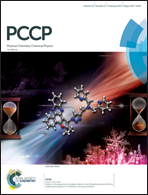AFM study on the adsorption of Hg2+ on natural molybdenum disulfide in aqueous solutions
Abstract
The adsorption of Hg2+ on natural molybdenum disulfide has been studied using atomic force microscope (AFM). The AFM imaging clearly illustrated the adsorption of Hg2+ on the surface of molybdenum disulfide, and also hydration layers on the surfaces. It was found that the presence of a hydration layer on molybdenum disulfide surfaces hindered the Hg2+ adsorption. Also, it was observed that the Hg2+ adsorbed appeared in the form of multilayers. The first adsorbed Hg2+ layer might be mainly attributed to the complexation of Hg2+ with S atoms exposed on molybdenum disulfide surfaces, while the second one might be due to the electrostatic interaction between negatively charged molybdenum disulfide and the cation Hg2+.



 Please wait while we load your content...
Please wait while we load your content...